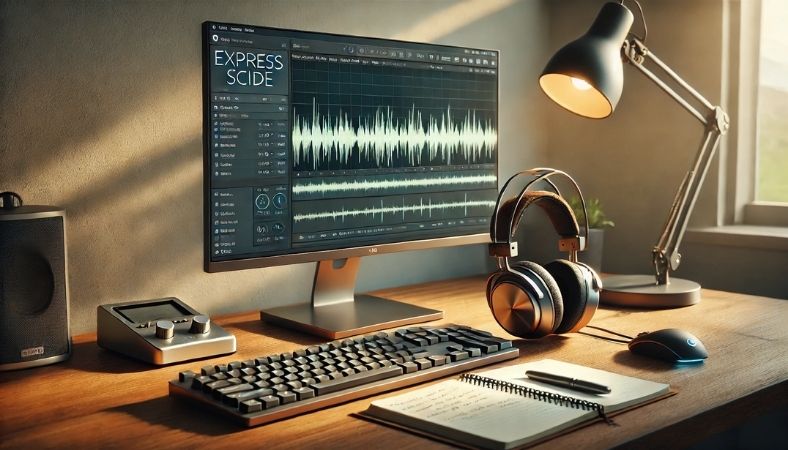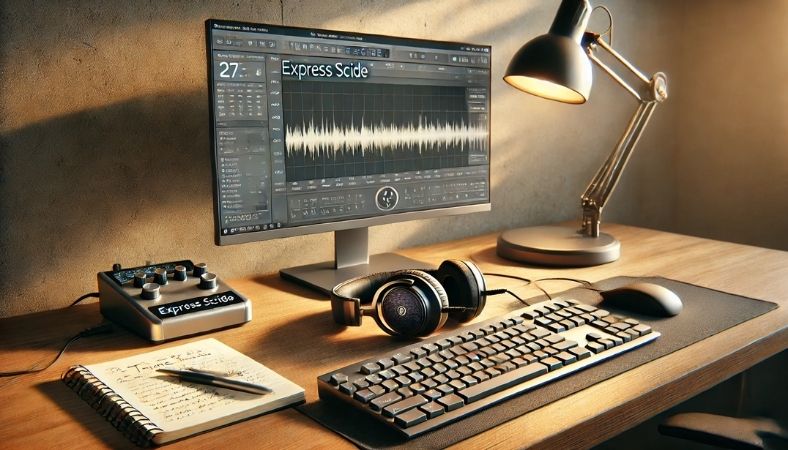Transcription Jobs
I’ve been working from home for years, and transcription jobs have always stood out as a solid way to earn money without being chained to an office. They are ideal for individuals who possess strong language skills, can type quickly, and seek a flexible opportunity that accommodates their lifestyle.
My buddy Alex started transcribing to pay for his music lessons, and now he’s making a full-time living at it. I’ve helped friends and clients figure out this world, and I’m excited to share the tips, tricks, and painful truths I’ve picked up along the way. Data entry remote jobs come with their share of headaches. Scams are a big one.

Could you please clarify what transcription jobs entail?
Imagine popping on headphones, firing up an audio file, and typing out every word you hear. That encapsulates the essence of transcription jobs. You’re turning interviews, doctor’s notes, or even YouTube videos into text. Companies in healthcare, law, or media need this work done to keep records straight or make content accessible. You don’t need a fancy degree, just a knack for listening and quick fingers. Most gigs use tools like Google Docs or software like Express Scribe. You can work part-time, freelance, or go all-in full-time. It’s ideal for night owls, parents, or anyone who wants to call their own shots.
The Stuff Nobody Tells You About
While transcription jobs may appear straightforward, they are not without challenges. One major issue is audio quality some recordings may sound as if they were recorded during a windstorm. My friend Alex once struggled with a podcast where the host was constantly mumbling while eating chips.
Pay can sting, too. Beginners might make $0.40 per audio minute, which adds up slowly when you’re starting out. Hours of typing and listening can tire your hands and brain. And tight deadlines? These deadlines are not to be taken lightly. Clients can be pushy, expecting you to turn around hours of audio in a day. These are real challenges, but you can handle them with a plan.

How to Get Started and Actually Succeed
I’ve seen enough people rock transcription jobs to know what works. Here’s my no-BS guide to jumping in and staying on top.
- Find Real Gigs
Stick to platforms like Rev, TranscribeMe, or Upwork. Scams are everywhere—Alex almost lost $50 to a shady “training fee” scheme. Check company reviews on Glassdoor or poke around Reddit’s r/WorkFromHome for the real scoop. - Level Up Your Typing
Aim for 60-70 words per minute. Free typing tests online let you practice. Get comfy with tools like Express Scribe. I learned its hotkeys in an afternoon, and it’s like having a superpower for pausing audio. - Build a Work Zone
Grab some decent headphones and a comfy chair. A foot pedal for controlling audio is worth its weight in gold. Keep your phone out of sight—I’ve wasted too many hours scrolling when I should’ve been working. - Take Care of Yourself
Staring at a screen while typing can wreck your wrists and eyes. Stretch every half hour. I started using a wrist brace after a marathon transcription session left me sore. It’s a lifesaver. - Ask for Better Pay
Check sites like Payscale to know what transcription jobs pay. Once you’re fast, aim for $1-$1.50 per audio minute. A client of mine, Priya, got a raise by showing she could handle tricky legal files without errors. - Stay Organized
Deadlines pile up fast. I use a free app called Todoist to track projects. Set specific hours for work, and stick to them, even when your couch is begging for a nap.
My Two Cents: Stories and Tips That Stick
If you’re like me, you want a job that doesn’t feel like a jail sentence. Transcription jobs can give you that freedom, but you’ve got to be smart about it. Take Alex, my friend who started transcribing to fund his guitar obsession. He was a total newbie, struggling with fuzzy audio and weird accents. But he spent a weekend messing around with oTranscribe, a free tool, and got the hang of it. Now he’s pulling in $30 an hour doing podcast transcripts. His trick? He didn’t just type he caught details like slang or pauses that made his work stand out.
Here’s something most people miss: transcription is detective work. You’re not just typing; you’re decoding what people mean through static or heavy accents. I always tell newbies to replay tough bits and jot down speaker quirks. Another tip? Track your time. I use Clockify to see how long projects take me. It’s helped me figure out which gigs are worth my time and which ones pay peanuts.
I’ve seen small moves pay off big. Priya, a client, bought a $25 foot pedal and cut her transcription time by a third. She also took a free medical terminology course online, which let her snag higher-paying healthcare gigs. That’s the kind of hustle that turns transcription jobs into something bigger. Want to geek out on the history? Check out Wikipedia’s page on transcription services it’s wild to see how this work went from court stenographers to digital freelancers.
The Ups and Downs
Transcription jobs have their perks and pains. Here’s the real deal so you know what you’re signing up for.
Pros
- Work Your Way: Pick your hours, and work from your bed or a café. It’s perfect for weird schedules.
- No Degree Needed: You just need to type fast and listen well. No student debt required.
- Mix of Work: Transcribe interviews, lectures, or court hearings. It keeps things intriguing.
- Skills That Transfer: Learn software or jargon that can lead to jobs like editing or content management.
Cons
- Pay Starts Low: $0.40-$0.80 per audio minute isn’t much when you’re learning the ropes.
- Mental Fatigue: Hours of focused listening can leave you zoned out.
- Crappy Audio: Background noise or mumbling can make you want to scream.
- SoLow Vibes: You might miss the opportunity to joke with coworkers or grab lunch together.
Think about what you can handle. If you are comfortable with routine and enjoy working independently, transcription jobs might be well-suited for you. If If you crave action or social interaction, you might want to consider mixing in other types of gigs.
Wrapping It Up: What to Do Now
Transcription jobs are a wonderful way to ease into remote work. While transcription jobs may not be financially rewarding, they can provide stability and, with perseverance, can lead to opportunities. By persevering and learning quickly, Alex transitioned from struggling to running his own transcription side hustle within a year. You can do the same.
I recommend exploring Rev or Upwork today and considering applying to a few gigs. Take a free typing test to see where you stand. Spend an hour playing with oTranscribe to get a feel for it. Set up a workspace that keeps you focused no snacks or shows nearby. And don’t settle for low pay forever push for better rates once you’re good. Why not start now? One application could be the start of something big.
Frequently Asked Questions
What do I need for transcription jobs?
Fast typing and excellent listening skills. Tools like Express Scribe help. Free typing tests online can boost your speed.
How do I spot legit transcription jobs?
Use sites like Rev or Upwork. Check Glassdoor for company reviews. Never pay to start a job.
What’s the pay like for transcription?
Beginners make $0.40-$1 per audio minute. With experience, you can hit $1.50-$2, especially in medical or legal.
Do I need a degree for transcription?
Nope. Accuracy and speed matter more than a diploma. Basic tech skills get you started.
How do I deal with bad audio?
Get noise-canceling headphones and replay tough parts. Practice with oTranscribe to handle tricky files better.
Can transcription lead to other jobs?
Totally. Learn specialized terms, and you could move into editing, captioning, or even project management.

